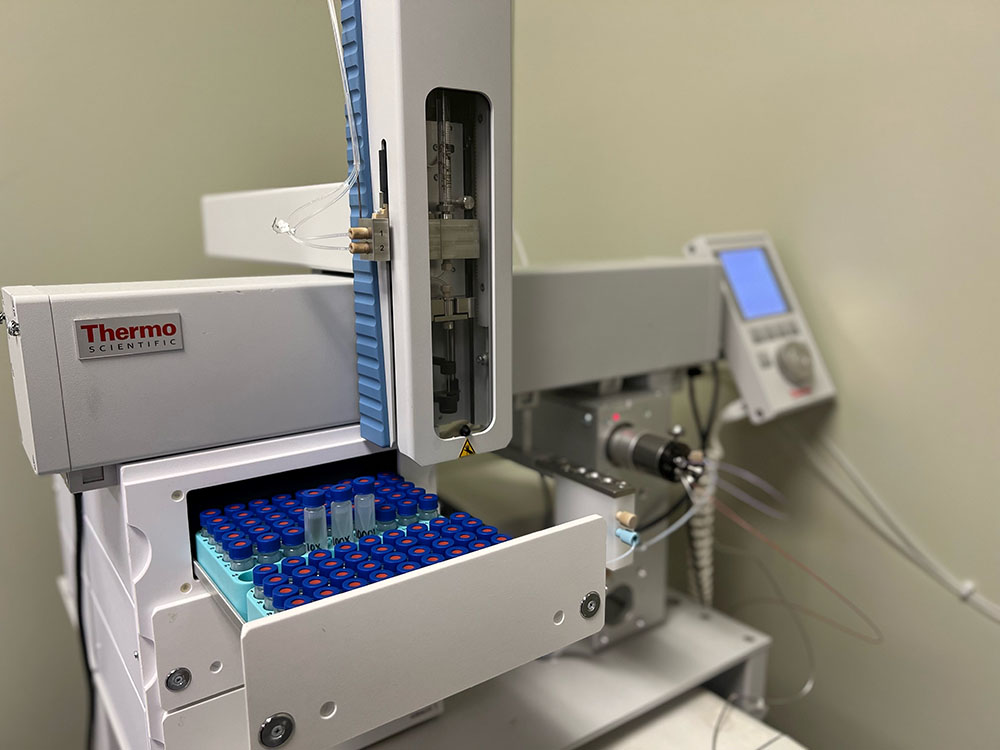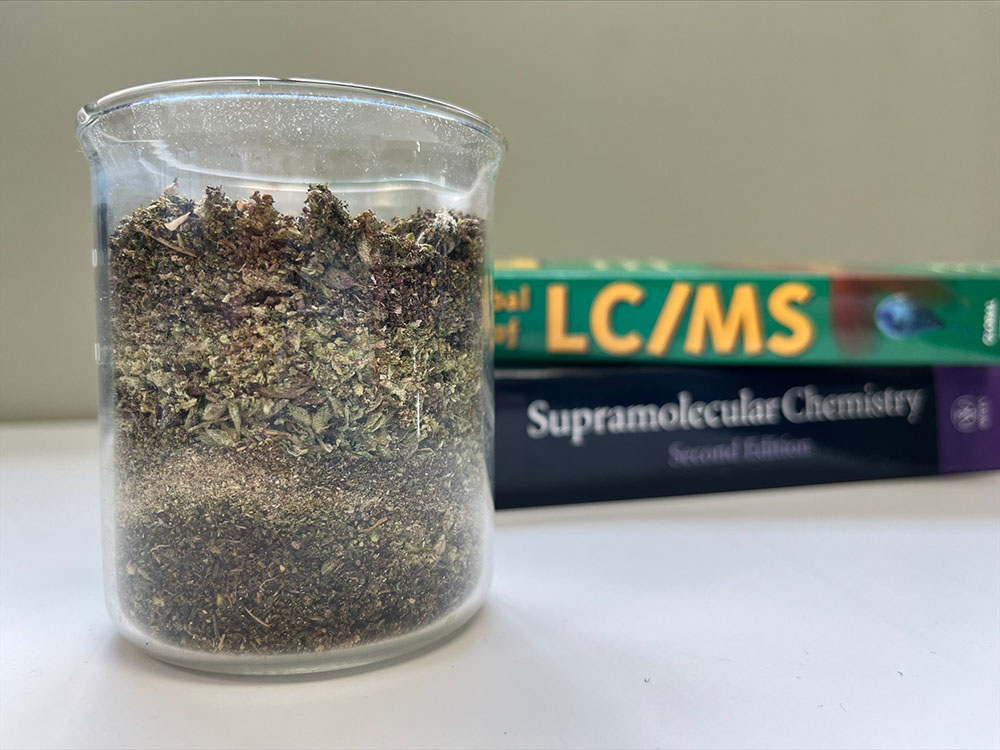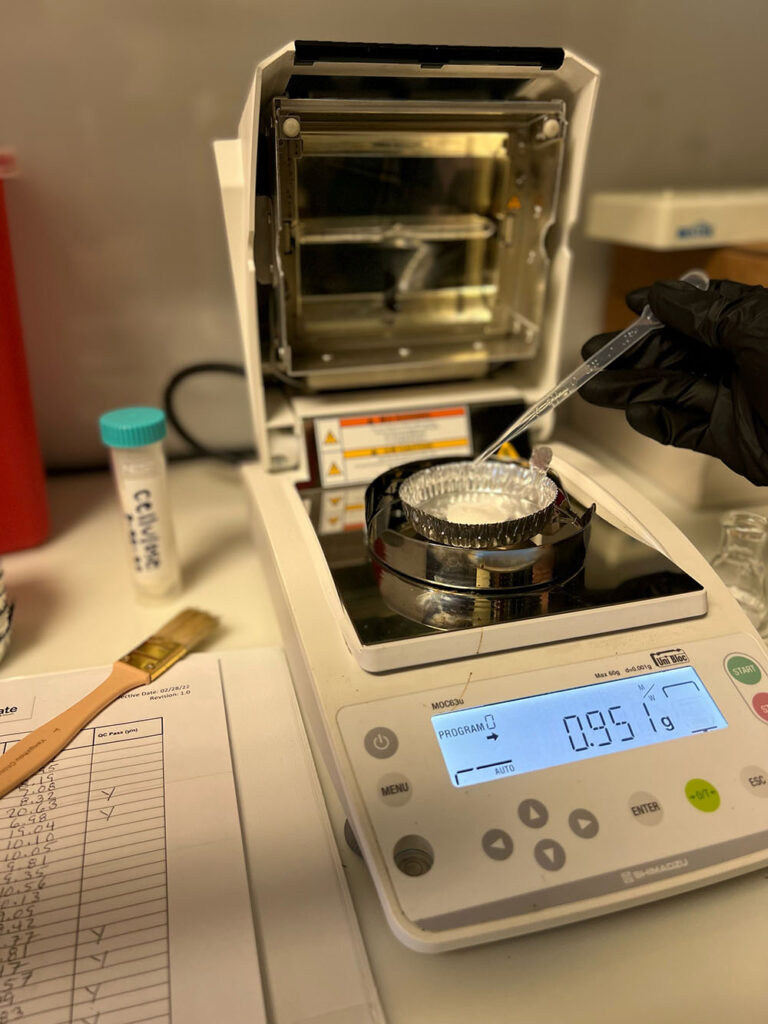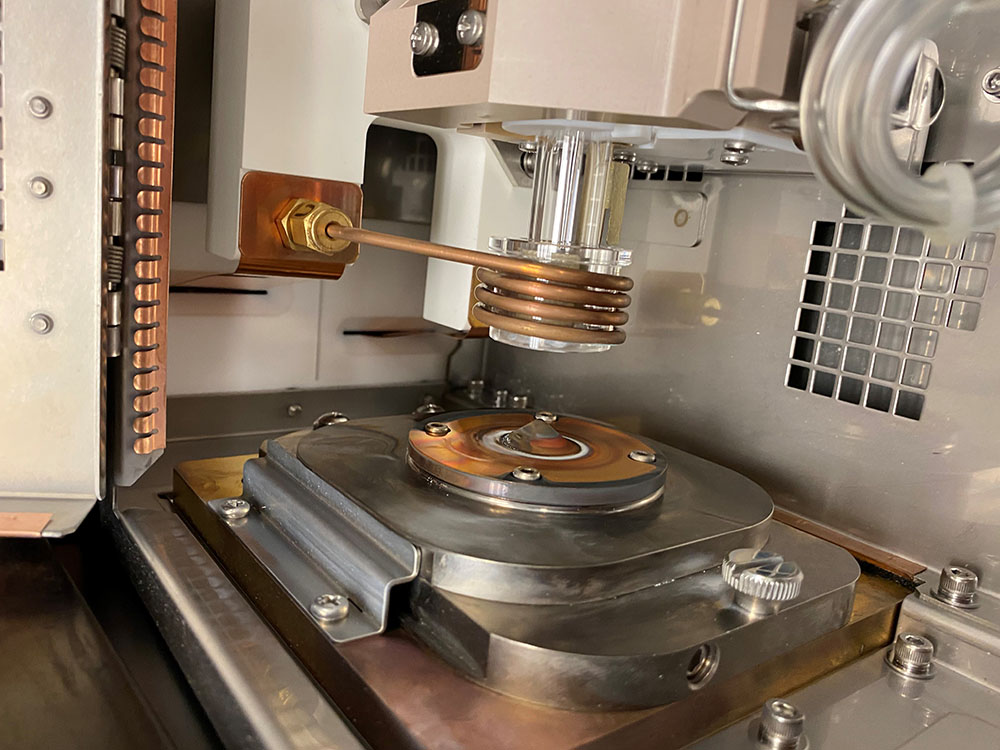“Our decade of experience in the analytical sciences is what sets Elevate Scientific apart . . . “
Dr. Robert Turner, Chief Scientist and CEO, Elevate Scientific

Cannabinoid Potency
General Summary:
The active components present in cannabis flower and manufactured medical marijuana products are quantified to assess quality. The state requires all harvest and production batches be tested for total THC. Other active cannabinoids are analyzed such as CBDA, CBD, CBGA, CBG, THCV, CBDV, CBC, including their degradation products, d8-THC and CBN. These can be useful for assessing product age and storage conditions.
Technology: HPLC (High-Performance Liquid Chromatography) from Thermo with PDA detector
Legal Limits: No state minimum or maximum cannabinoid percentages required in products
Origin:
Cannabinoid potency is a part of full compliance testing required by the state of Oklahoma. (310:681-8-1)
“Processors and growers shall test harvest batch and production batch samples for levels of total THC and terpenoid type and concentration.”

Heavy Metals
General Summary:
Heavy metals are present in soils, water, nutrients, and pesticides. Cannabis plants naturally accrue heavy metals through uptake in their root system. Most heavy metals are safe in small doses, but high levels of exposure or consumption can lead to heavy metal poisoning. For this reason, the state requires all harvest and production batches be tested to determine the levels of mercury, lead, arsenic, and cadmium.
Products Requiring Testing: “All harvest batch and production batch samples shall be tested for heavy metals. . .”
Technology: Inductively coupled plasma / mass spectrometry (ICP-MS) – Perkin Elmer
Legal Limits:
| Mercury < 0.1 PPM | Lead < 0.5 PPM | Arsenic < 0.2 PPM | Cadmium < 0.2 PPM |
Origin:
Heavy metals are part of the full compliance testing required by the State of Oklahoma. (310:681-8-1 (i) (4))
“All harvest batch and production batch samples shall be tested for heavy metals, which shall include but is not limited to lead, arsenic, cadmium, and mercury. Test results shall meet thresholds set forth in Appendix A. If the cannabis concentrate used to make an infused product was tested for metals and test results indicate the lot was within established limits, then the infused product does not require additional testing for metals.”

Microbiology
Technology:
Manual plating and microscopic inspection
Description:
Our samples are screened for Total Yeast and Mold, Aspergillus niger, A. flavus, A. terreus, A. fumigatus, Shiga-toxin producing Escherichia coli (STEC), and Salmonella spp. Aspergillus spp. are known to pose risks to the respiratory pathways and certain molds produce aflatoxins. Yeast contamination in the body can lead to autointoxication syndrome. E. coli (STEC) and Salmonella can disrupt the functions of the digestive system and produce harmful toxins inside the body.

Pesticides
Technology:
Liquid Chromatography/Tandem Mass Spectrometry (LC/MS/MS)
Description:
Pesticides are a family of compounds including herbicides, insecticides, and fungicides. Pesticides bioaccumulate in the upper levels of the food chain and can cause significant health problems to people and native wildlife. The analysis is done using a triple quadrupole mass spectrometer with an electrospray ionization source

Mycotoxins
Technology:
Liquid Chromatography/Tandem Mass Spectrometry (LC/MS/MS)
Description:
Mycotoxins are produced by fungi as a form of biological warfare to remove competition for resources and predation. These compounds can be airborne and can cause neurological and physiological diseases when significant concentrations arise from a mold bloom. The analysis is done using a triple quadrupole mass spectrometer with an electrospray ionization source

Terpenes
General Summary:
Terpenes are aromatic compounds found in cannabis. This bouquet of smells determines the full range of the cannabis flowers flavor profile. The state of Oklahoma defines a flowers potency by its cannabinoid and terpinoid profiles.
Products Requiring Testing: “…medical marijuana and medical marijuana products being transferred or sold to a dispensary or by a dispensary shall contain, at a minimum, the following information:
Technology: GC MS (Gas chromatography–mass spectrometry)
Legal Limits: Potency testing is not a safety test and therefore has no legal limit.
| Terpene | Aroma | Terpene | Aroma |
| alpha-Bisabolol | citric and floral | D-Limonene | orange, citrus smell |
| Camphene | Essential oils | Linalool | flowers |
| delta-3-Carene | sweet, pine, cedar, woodsy, and pungent | beta-Myrcene | clove, earthy |
| -)-Caryophyllene Oxide | lemon balm | cis-Nerolidol | citrus |
| beta-Caryophyllene | woody, black-peppery | trans-Nerolidol | citrus |
| p-Cymene | musty orange | Ocimene | floral |
| Eucalyptol | minty | Alpha-Pinene | pine |
| Geraniol | floral, fruity | beta-Pinene | pine |
| Guaiol | wood and smoke | alpha-Terpinene | sour citrus |
| Humulene | hops | gamma Terpinene | Sweet citrus |
| Isopulegol | mint | Terpinolene | smokey or woody |
Origin: “Terpenoids” means isoprenes that are the aromatic compounds found in cannabis, including, but not limited to: limonene, myrcene, pinene, linalool, eucalyptol, Δ-terpinene, ß-caryophyllene, caryophyllene oxide, nerolidol and phytol.
“Labels on medical marijuana and medical marijuana products being transferred or sold to a dispensary or by a dispensary shall contain, at a minimum, the following information:”
“Processors and growers shall test harvest batch and production batch samples for levels of total THC and terpenoid potency type and concentration. “

Water Activity
General Summary:
Water activity measures the level of water bound to the surface of a product. This test is used to determine the stability and shelf life of cannabis flower. The higher the water activity, the higher the likelihood microbial growth could occur down the line. High levels of water activity can also have an impact on the breakdown of THC.
Products Requiring Testing:
“All harvest batch samples shall be tested to determine the level of water activity… This subsection shall not apply to harvest batches that are flash frozen.”
Technology:
Water activity meter
Legal Limits:
< 0.65 A.W.
Origin:
Water content is a part of full compliance testing required by the state of Oklahoma. (310:681-8-1 (i) (8))
“All harvest batch samples shall be tested to determine the level of water activity and the percentage of moisture content. This subsection shall not apply to harvest batches that are flash frozen. (B) A harvest batch sample shall be deemed to have passed water activity testing if the water activity does not exceed 0.65 Aw. The laboratory shall report the result of the water activity test, to two significant figures, on the certificate of analysis (COA) and indicate “pass” or “fail” on the COA.

Moisture Content
General Summary:
Cannabis has naturally occurring moisture within the flower. The primary purpose of testing for moisture content is to determine the efficacy of how the flower was dried and cured. If the sample has excess moisture it can create the ideal environment for mold and bacteria to grow. Additionally, moisture content allows us to determine the dry weight of the sample by removing the percent of moisture present into the equation.
Products Requiring Testing:
“All harvest batch samples shall be tested to determine … the percentage of moisture content. This subsection shall not apply to harvest batches that are flash frozen.”
Technology:
Moisture balance analyzer
Legal Limits:
< 15.0%
Origin:
Moisture content is a part of full compliance testing required by the state of Oklahoma. (310:681-8-1 (i) (8))
“(A) All harvest batch samples shall be tested to determine the level of water activity and the percentage of moisture content. This subsection shall not apply to harvest batches that are flash frozen… A harvest batch sample shall be deemed to have passed moisture content testing if the moisture content does not exceed fifteen percent (15.0%). The laboratory shall report the result of the moisture content test to the nearest tenth of one percent, by weight, of the dry sample on the COA and indicate “pass” or “fail” on the COA”

Residual Solvents
General Summary:
The process for the manufacturing of distillate can involve many different types of organic solvents. For this reason, the state requires that all manufactured products be tested for 11 different organic solvents. This helps to ensure the safety of all patients.
Products Requiring Testing: Production batches of cannabis concentrate used to make infused products.
Technology: HS GC MS (Headspace Gas chromatography–mass spectrometry) from Thermo
Legal Limits:
| Acetone <1,000 ppm | Benzene <1,000 ppm | Butane <1,000 ppm | *Ethanol <5,000 ppm |
| Heptane <1,000 ppm | Hexane <60 ppm | Isopropanol <1,000 ppm | Pentane <1,000 ppm |
| Propane <1,000 ppm | Toluene <180 ppm | Xylenes <430 ppm |
Origin:
Residual solvents are part of the full compliance testing required by the State of Oklahoma. (310:681-8-1 (i) (3))
Production batch samples shall be tested for residual solvents and chemical residue as set forth in Appendix A. If the cannabis concentrate used to make an infused product was tested for solvents and chemical residue and test results indicate the lot was within established limits, then the infused product does not require additional testing for solvents and chemical residue.